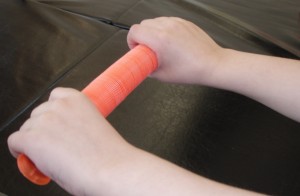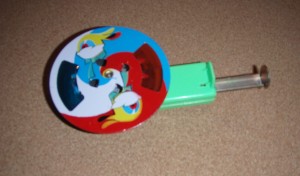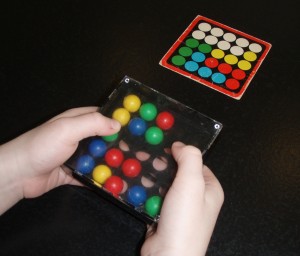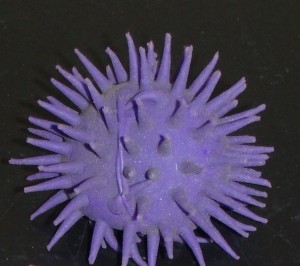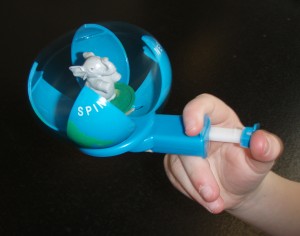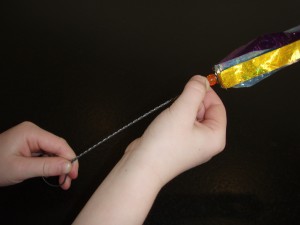We are approaching the most heavily traveled season on the year. Along with the joys of visiting family and friends, we often struggle through traffic jams of mammoth proportions. Whether facing flying delays or miles of crawling traffic, when kids are in tow, the frustration and anxiety can multiply.
No matter whether you take a car, train, bus or plane, basically children need to endure several to many hours somewhat incarcerated. As I have eluded to many times, young bodies require movement to help them stay organized. Lack of such input tends to make them cranky.
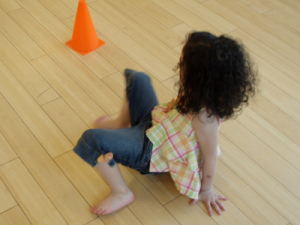 Here are a few tips that might help all of you survive the ordeal.
Here are a few tips that might help all of you survive the ordeal.
- When the opportunity presents itself for movement-essentially when there is an open space, allow a few laps back and forth, whether it is skipping, hopping or crab walking. I do not mean to allow children to run wild around the terminal. Structure the activity so it is clear that there is adult supervision for your child’s safety as well as the consideration of other passengers. Make sure the space is unobstructed and the chances of plowing into others is minimized (you don’t want your four year old slapped with a law suit!).
- In more cramped situations play a modified Simon Says. Include bending over as the change in head position stimulates the vestibular system.
- Bring a small ball (there are some very cool ones that light up now for $5-10). Pass the ball between the legs back and forth. This requires inverting the head.
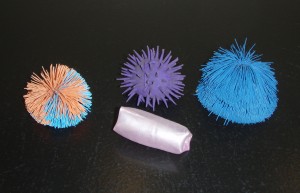 Practice catching a ball or a koosh. For the child 3 to 6 years old tossing the ball 1-3 inches up in the air and catching it repetitively is quite a nice challenge. For the older child, tossing up higher and clapping before catching is an even bigger challenge. This one, however, should be done away from others as a bad toss can lead to disaster.
Practice catching a ball or a koosh. For the child 3 to 6 years old tossing the ball 1-3 inches up in the air and catching it repetitively is quite a nice challenge. For the older child, tossing up higher and clapping before catching is an even bigger challenge. This one, however, should be done away from others as a bad toss can lead to disaster.- Do “butt lifts.” Place both hands under your bottom and attempt to lift your body up. See how long you can hold it. Have your child compete with you.
- Play Alive Awake Alert Enthusiastic or Head Shoulders Knees and Toes
- Blow up a balloon; bop it back and forth or blow it across the tray or seat.
- Blow a cotton ball or ping pong ball across a tray.
- Play finger soccer (flicking a folded up piece of paper across a flat surface).
Long term sitting becomes more difficult. Here are some language and visual attention games:
- “I see something you don’t see …”
- Twenty Questions
- Keeping track of the state license plates
- Identify shapes (e.g sttering wheel=round)
These games tax the cognitive/language centers and can only be sustained for so long.
Here are some other ideas, which include a little fine motor and visual motor challenges.
- The Square Game: This can be done on a napkin or scrap of paper if nothing else is available. Make a dot matrix (the younger the child the smaller it should be). Connect dots until squares are made. When a square is made it is initialed by the person who made it. Each person takes a turn making one line between two dots. If a square is made you go again. The goal is to have the most squares.
- Other simple drawing games: Tic Tac Toe, Hangman, modified Pictionary. A person draws one part to the picture until the object intended to be drawn is guessed.
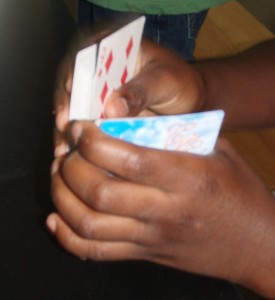 Card games: Card games can be enjoyed from as young as 2 years old. For the younger child, simply picking them up and arranging them, sorting them by color are all good things. For the slightly older child, Memory or Concentration is fun. The number of cards should be dictated by how young the child is and how capable. Older children 4-7 will enjoy simple games such as Slap Jack, War (interminable for adults but immensely enjoyed by children), Go Fish. Older children 6 on will enjoy Rummy games and many other variations of similar complexity. Solitaire (with cards rather than computer) is an everlasting gem. Cards provide exercises for the little muscles in the hand.
Card games: Card games can be enjoyed from as young as 2 years old. For the younger child, simply picking them up and arranging them, sorting them by color are all good things. For the slightly older child, Memory or Concentration is fun. The number of cards should be dictated by how young the child is and how capable. Older children 4-7 will enjoy simple games such as Slap Jack, War (interminable for adults but immensely enjoyed by children), Go Fish. Older children 6 on will enjoy Rummy games and many other variations of similar complexity. Solitaire (with cards rather than computer) is an everlasting gem. Cards provide exercises for the little muscles in the hand.- Clapping games and clapping patterns. These integrate motor and language centers in the brain, help develop sequencing skills and bilateral motor coordination
- Tactile Fidget toys: These can be found at the check out at most toy stores. When choosing these, as a courtesy to nearby passengers, try to find quiet toys!
